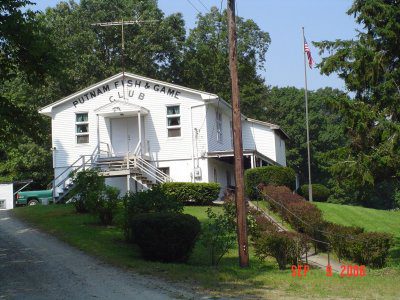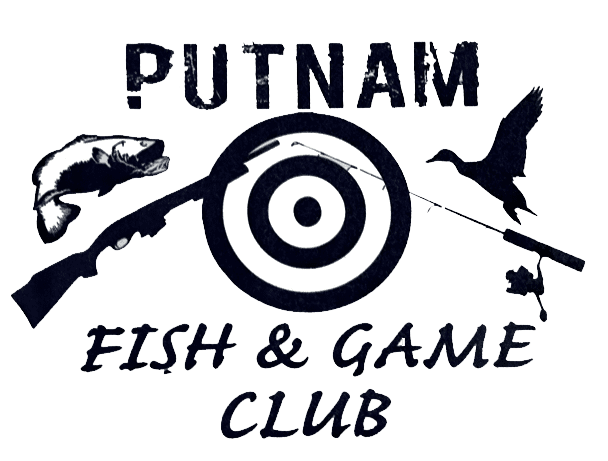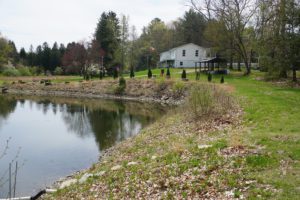In 1939 about 15 men renovated the top floor of a barn on Church Street in Putnam and the Putnam Fish and Game Club was born. Sixty-nine years later, located on Stonebridge Road in Woodstock, the organization is alive and well with 170 dues-paying members. In order for a club to survive over time there has to be a core group of devoted members- people who ride the ups and downs of change without losing faith in “their” club.
From four such individuals we learn a little about the Putnam Fish and Game Club and its interests, original charter members Ronald Beaudreault, Lionel LaBonte, Robert Beaudreault and V. P. Richard Allard who have been members since 1955.
At first dues were ten cents per week. Ten years later there was enough money to buy 47 acres of land “for about $2,500” siad Allard. In 1953 the members constructed a clubhouse which today is by far the smallest section of the building. It now serves as a game room which contains among other things, a pool table and a ping pong table. Three years later, they added a much larger adjacent room. This is the meeting room complete with mounted evidence of successful hunting trips, lots of comfortable chairs and couches and, of course a TV. The last addition took place in 1964 when the upstaris hall was built. It can easily seat 200 people.
The club is open 24 hours a day to its members, they all have their lock combinations. There is no bar. Outside there is a 100 yard rifle range, a separate heated indoor pistol and rifle range, archery targets, horse shoe pits, outdoor picnic area, a boat launching area and boats which are free to use by members on Little Pond and Roseland Lake. There is pheasant stocking, turkey shoots, a fisherman’s breakfast on opening day, a trout stocking of Allard’s Pond and the biggest event of the year, the annual game dinner free to members. No one is sure exactly what will be served because game is a big part of the menu.
As the club has changed so has the reality of hunting. For example, the word farming has become part of the hunting dialogue. Farmers raise animals while hunters kill them. Yet the word farming surfaces as kill limits are debated, as they should be.
Open land becomes developed, animals are slaughtered on the highways and we farm deer to preserve trees that are being stripped of bark by starving animals. It’s a troubling situation and a perplexing problem.
“Everything is being built up so much. We’re being squeezed out,” said Robert Beaudrealt. If you want to hunt deer on state land you must submit your name into lotteries which control the accessibility of the public hunting grounds. Some hunters are lucky enough to have developed ties with local landowners who permit them to hunt on their property. There is an array special fees, regulations, permits etc.
Children love animals, Indians hold them in high regard. Yet natural life is in constant state of transference, from one mouth to another. Sport became part of hunting as survival became less dependent on it.Yet it symbolizes a deep and profound connection to what our ancestors all were, hunters. Today, we are still lucky enough, if we so choose, to mimic what once was an activity essential to life.
-Wayne Correa, Putnam Town Crier



